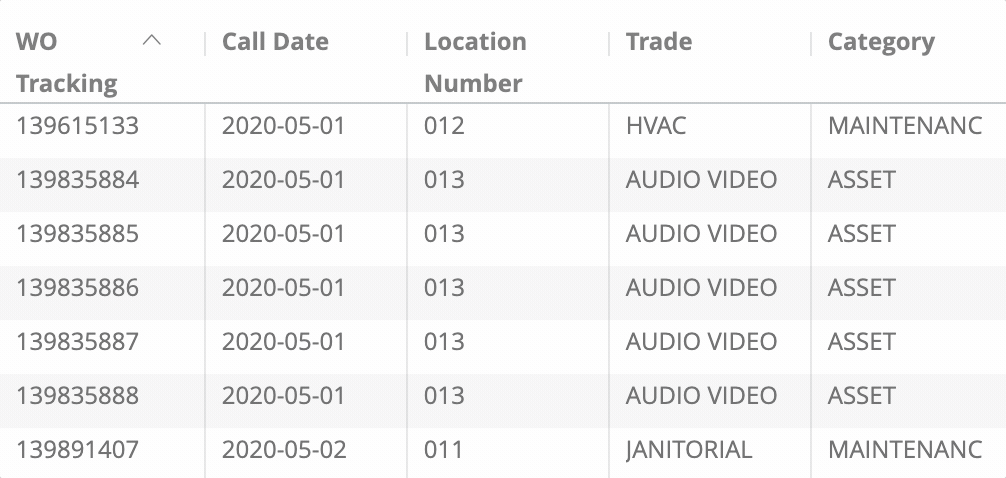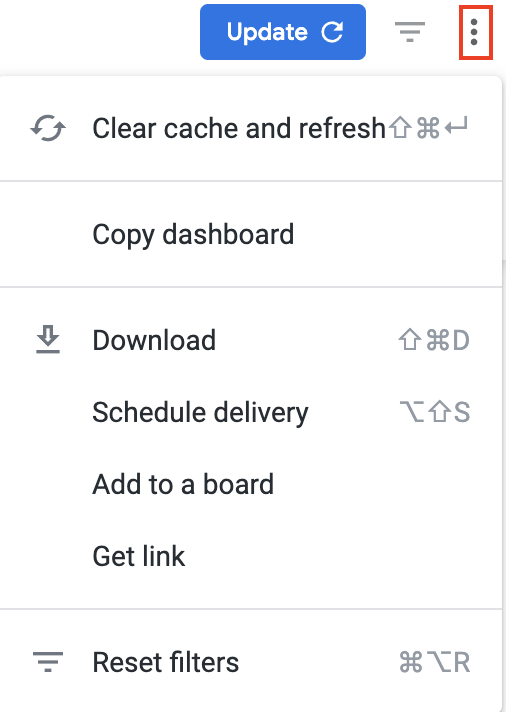Compliance WO Report
Caroline Antoun
The Compliance WO Report dashboard captures data from all Compliance PM work orders. View compliance across all locations, linked work orders, and spend associated with work orders that bring the location into compliance to monitor and manage compliance efficiently. By providing detailed insights and advanced filtering options, this report ensures you can easily track compliance status, address non-compliance issues promptly, and maintain a clean audit trail. Use this report to stay on top of compliance regulations and keep your operations running smoothly.

Navigating the Compliance WO Report Dashboard
Section 1. Filters
The Compliance WO Report allows you to filter by the following criteria, in addition to the basic WO report filters:
- WO Tracking Number
- PM Service Description
- PM Frequency Description
- Compliance Status
- Compliance Attachment Status
- Compliance Valid From Date
- Compliance Valid To Date
Section 2. Headline Metrics
The headline metrics in this dashboard change with the filters. Drill in for further data on locations in and out of compliance, linked work orders, and the total invoice amount.
Overall Compliance Percentage
This number displays the overall compliance percentage based on the set filters. A location is considered compliant if:
- The compliance status is set to "Pass" or "Pass with Recommendation."
- For multiple PMs at the same location with the same Service Description and frequency, at least one PM has a Valid To Date that extends beyond today's date.
Total Locations in Compliance
This metric displays the number of locations where all PM services have a "Pass" or "Pass with Recommendation" status and have a Valid To Date beyond today's date.
Total Locations Out of Compliance
This metric shows the total number of locations where a single PM work order is out of compliance or has expired.
Total Invoice Amount on Compliance Work Orders
This displays the total invoice amount for compliance work orders based on the current filters.
Total Completed Follow-Up Work Orders
This metric shows the total number of completed follow-up work orders. Drill-down to view the specific work orders.
Total In-Progress Follow-Up Work Orders
This metric shows the total number of in-progress follow-up work orders, Drill-down to view the specific work orders.
Section 3. Compliance Table
View compliance data broken down per compliance PM work order. Sort and filter the table by the following column headers:
- WO Tracking Number - Tracking number associated with the compliance PM work order.
- Trade
- Category
- Location Number
- District
- Region
- PM Service Description
- PM Frequency Description
- Compliance Attachment Status - Denotes whether the work order has an attachment.
- Valid From Date - Date the inspection is validated.
- Valid To Date - Date the compliance inspection is valid until.
- Compliance Comment - Comments associated with this compliance PM.
- Compliance Attachment - Name of the uploaded attachment.
- Linked WO Count - Number of work orders linked to this compliance PM.
Below is a quick reference guide regarding tracking numbers in Analytics, filtering, sorting, downloading data, and sending reports. Throughout Analytics you can drill down into visualizations to see the underlying data. In most cases, the tracking numbers related to that data are listed. You can click the tracking number to navigate straight to the work order details in Service Automation. On top of the report are all-inclusive filters to help you hone in on key data. All reports on the page are affected by the criteria set in these all-inclusive filters. The filter criteria for each dashboard may differ. Filters reset to the default when the page is refreshed. Click filter field to show the criteria. Select the desired criteria to include or exclude: To Include criteria: select is equal to, contains, starts with, or ends with, and then begin typing the criteria in the picklist. Select the desired criteria (or multiple criteria) from the picklist. To exclude criteria: select is not equal to, does not contain, does not start with, or does not end with. Is null depicts the absence of data in a data set. Conversely, is not null depicts the presence of data To include or exclude data without a certain data criteria — for example, to select data without a Region or District assigned in Service Automation — choose is blank / is not blank. To add more options, click the plus sign (+) next to a field to add another option to the filter. The new option will appear as either an OR condition or an AND condition, depending on the type of filter option. Once all criteria are selected, click Refresh icon in the top-right corner. The Dashboard report updates with the selected criteria. More details are available on Filtering an Analytics Dashboard Analytics tables are dynamic, as you can: In the upper-right corner of any page, click the Vertical Ellipses to download reports, schedule delivery of reports at regular intervals, add to a board, or get a link. You can download data from a table and visualization or download a dashboard tabto PDF or CSV. Select the desired File Format and choose a File Name: A default name is listed but you can change it. On the desired dashboard (or dashboard tab), click the Gear icon in the upper-right of the page, and then click Download as PDF. The Download modal appears. A default Filename appears, but you can change it. Under Advanced options: Single-column format lays out all tables and visualizations on a page into one column in the PDF, as opposed to how it is laid out in the dashboard. Expand tables shows all rows in a table, instead of just the rows that appear on the dashboard. Paper size adjusts the PDF to your desired size. Click Open in Browser to view the PDF in your chosen browser, or click Download to save a version of the report onto your device. On the desired dashboard (or dashboard tab), click the Gear icon in the upper-right of the page, and then click Download as CSVs... A new browser tab opens. After the files render, you are prompted to save the CSV Zip file onto your device. More details are available on Downloading and Sending Dashboards and Reports You can also Send a one-time report via email or Schedule a recurring email send. On the desired dashboard (or dashboard tab), click the Gear icon in the upper-right of the page, and then click Send. The Send (Dashboard Name) modal opens. A Title is given by default, but you can change it. Under Who should it be emailed to?, enter the desired recipient(s), separated by a comma, and then click Add. (Optional) Click Include a custom message to add a personal note. Under Format data as, choose PDF, Visualization, or CSV Zip file. (Optional): Click Filters to limit the criteria that appear in the email. Note that the same filters on the dashboard itself will also appear here. Click Send. The email is sent to your recipients. On the desired dashboard (or dashboard tab), click the Gear icon in the upper-right of the page, and then click Schedule. The Schedule (Dashboard Name) modal opens. A Title is given by default, but you can change it. Under Who should it be emailed to?, enter the desired recipient(s), separated by a comma, and then click Add. (Optional) Click Include a custom message to add a personal note. Under Format data as, choose PDF, Visualization, or CSV Zip file. Under Deliver this schedule, choose Daily, Weekly, Monthly, Hourly, or By minute (in 5-minute increments, up to 30 minutes) (Optional): Use Filters to limit the criteria that appear in the email. Note that the same filters on the dashboard itself will also appear here. Click Send. The email is sent to your recipients. More details are available on Downloading and Sending Dashboards and ReportsCommonly Used Features
Tracking Numbers in Analytics
Filtering Dashboards
![]()
Dynamic Table Sorting

Downloading and Sending Reports


-
Page:
-
Page:
-
Page:
-
Page:
-
Page:
-
Page:
-
Page:
-
Page: